Forex Micro Account vs Standard Account - How do they differ?
In forex trading, forex brokers provide traders with a range of account types tailored to different trading styles, capital sizes, and risk tolerance levels. The most common options include Micro, Mini, and Standard accounts. Among these, Micro and Standard accounts are the most widely offered by brokers, though several reputable brokers also offer Mini accounts.
In this article, we’ll compare Forex Micro Accounts vs Standard Accounts, exploring their key features, benefits, and drawbacks. By understanding their distinctions, you can make an informed decision about which account best aligns with your trading goals and preferences.
What is a Forex Micro Account?
A forex micro account is a type of trading account that allows traders to trade with significantly smaller contract sizes compared to a standard account. In a standard account, one lot typically represents 100,000 units of the base currency. In contrast, one micro lot in a micro account represents 1,000 units of the base currency.
This smaller contract size has several implications related to risk management and the capital required to open and maintain positions. Micro accounts are often marketed towards trading newcomers or those who want to test strategies with minimal financial risk.
Advantages of Forex Micro Accounts
- Lower Capital Requirement - Micro accounts generally have much lower minimum deposit requirements compared to standard accounts. This makes them accessible to individuals with limited capital who want to participate in the forex market.
- Reduced Risk - With smaller trade sizes, the potential loss per price movement is significantly reduced. This allows new traders to gain experience and understand market dynamics without risking large sums of money on each trade. Experienced traders can also test out new strategies with significantly less risk exposure.
- Greater Flexibility in Position Sizing - The smaller lot sizes allow for more granular control over position sizing. Traders can fine-tune their trade volume based on their risk management strategy and account balance.
Disadvantages of Forex Micro Accounts
- Limited Profit Potential - Because of smaller trade sizes, profits from micro accounts are relatively small unless leverage or trade frequency is high.
- Potentially Higher Spreads - Some brokers may offer slightly wider spreads on micro accounts compared to standard accounts.
- Fewer Advanced Features - Micro accounts might have limited access to some of the more advanced trading tools, analysis features, or account types offered by a broker.
Who is the Micro Account Best Suited For? - Forex micro accounts are ideally suited for new traders, those with small capital, and individuals who want to practice trading in a real environment without large financial exposure. It’s also a suitable option for conservative traders or those fine-tuning a strategy with minimal risk.
What is a Standard Forex Account?
A standard forex account is the most common type of trading account offered by forex brokers. On this account, one standard lot represents 100,000 units of the base currency, as mentioned earlier.
These accounts are typically designed to meet the needs of traders with varying experience levels and trading styles. While they may not be a one-size-fits-all account, most traders are comfortable trading on standard accounts.
Advantages of Standard Forex Accounts
- Higher Profit Potential - With larger trade sizes, the potential for profits on successful trades is significantly higher compared to micro accounts.
- Low Spreads - Standard accounts often feature tight spreads due to the higher trading volumes associated with them. This can lead to lower transaction costs for active traders.
- Access to Full Range of Features - Standard account holders usually have access to the complete suite of trading tools, analysis resources, and market products offered by a broker.
- Suitable for All Trading Styles - Standard accounts can accommodate a wide range of trading strategies, from scalping to long-term position trading.
Disadvantages of Standard Forex Accounts
- Higher Capital Requirement - Standard accounts typically require a significantly higher minimum deposit compared to micro accounts due to the larger contract sizes.
- Increased Risk - Trading with standard lots exposes traders to greater potential losses per pip movement. Effective risk management is crucial to avoid significant financial setbacks.
Who is the Standard Account Best Suited For? - Standard forex accounts are generally best suited for all kinds of traders. Forex brokers offer this account type to accommodate the majority of their clients. However, compared to micro accounts, Standard accounts are best suited for traders who are comfortable with higher risk and have sufficient capital to manage drawdowns.
Key Differences Between Forex Micro and Standard Accounts
The key difference between a micro and a standard forex account lies in the trade size and the level of risk exposure. As detailed above, micro accounts allow trading in smaller lot sizes, typically 0.01 lots (micro lots). This makes them ideal for trading newcomers or traders with limited funds. Brokers usually offer micro accounts with lower minimum deposits. So, generally speaking, Micro Accounts allow for smaller trade sizes and lower risk.
In contrast, a standard account is designed for trading standard lots (100,000 units of the base currency), offering higher potential returns but also increased risk. Compared to micro accounts, standard accounts are generally favoured by more experienced traders who are comfortable managing larger positions and have more capital at their disposal. So, generally speaking, Standard Accounts involve larger trade sizes and higher risk exposure.
Where Can You Find Brokers Offering Micro and Standard Accounts?
Many leading forex brokers offer both micro and standard accounts to accommodate traders with different experience levels and financial capabilities. Here are a few examples of well-regarded brokers that offer both:
Pepperstone
While Pepperstone does not exclusively offer a separate Standard and Micro account, it supports trading micro lots and standard lots on both its trading accounts. Pepperstone offers the Standard and the Razor accounts, both of which support trading in micro lots (0.01 lot).
This means that traders have the flexibility to trade different lot sizes, including micro (0.01 lot), mini (0.1 lot), and standard (1 lot). The maximum trade size supported by this broker is 100 lots, which is available on both accounts. Pepperstone does not have a minimum deposit requirement, allowing traders to invest whatever amount they want.
Regarding the spreads involved, traders have access to two different structures depending on the account they use. The standard account offers spreads from 1.0 pips for major currency pairs with no commission charged. In contrast, the razor account features raw spreads from 0.0 pips plus a modest commission that depends on the trading platform used.
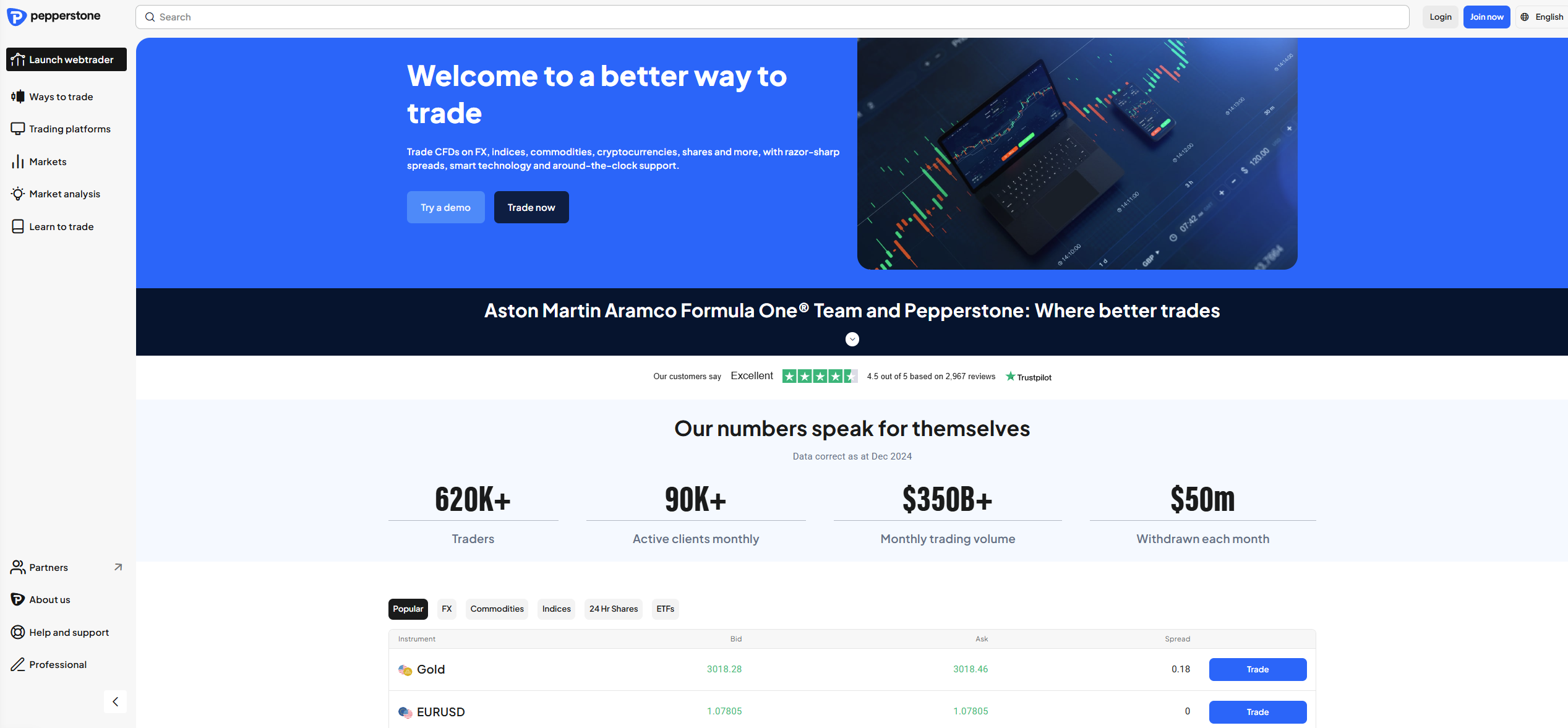
The commission is $3.5 or €2.6 or £2.25 or CHF 3.30 per side per lot, depending on the account currency for MetaTrader 4 and MetaTrader 5 users. Similarly, TradingView and Pepperstone Platform users also pay a $3.5 commission per side per lot. Meanwhile, traders on cTrader pay a lower commission of $3 per side per lot. For TradingView, cTrader, and Pepperstone Trading Platform accounts in currencies other than USD, the commission is converted at the spot rate into the account's currency.
On Pepperstone, traders have access to a deep collection of market products totalling over 1,400 different assets. These include CFDs on forex, indices, commodities, currency indices, cryptocurrencies, stocks, and ETFs.Importantly, Pepperstone is a well-regulated broker across multiple jurisdictions. This broker operates under the regulation of the FCA in the UK, the CySEC in Cyprus, the ASIC in Australia, the BaFin in Germany, and the DFSA in the DIFC (Dubai), among others.
75.3% of retail CFD accounts lose money
Exness
Exness is yet another top-rated broker that supports micro lot (0.01) and standard lot trading in all of its trading accounts. The maximum trade size supported by this broker is 200 lots. This gives traders a lot of flexibility when it comes to position sizing for risk management and strategy refinement. The minimum deposit for this broker site is $10 for Standard accounts and $200 (might vary depending on region) for professional accounts.
The standard account features spreads from as low as 0.2 pips for major currency pairs. On the other hand, the standard cent account offers spreads from 0.3 pips for major currency pairs. Meanwhile, the pro account offers lower spreads from as low as 0.1 pips for major currency pairs. These three accounts do not charge a commission when trading.
In comparison, the raw spread account delivers spreads from 0.0 pips but includes a commission of up to $3.50 per side per lot. Lastly, the Zero account offers zero spreads (from 0.0 pips) on the top 30 instruments, with commissions starting as low as $0.05 per side per lot.
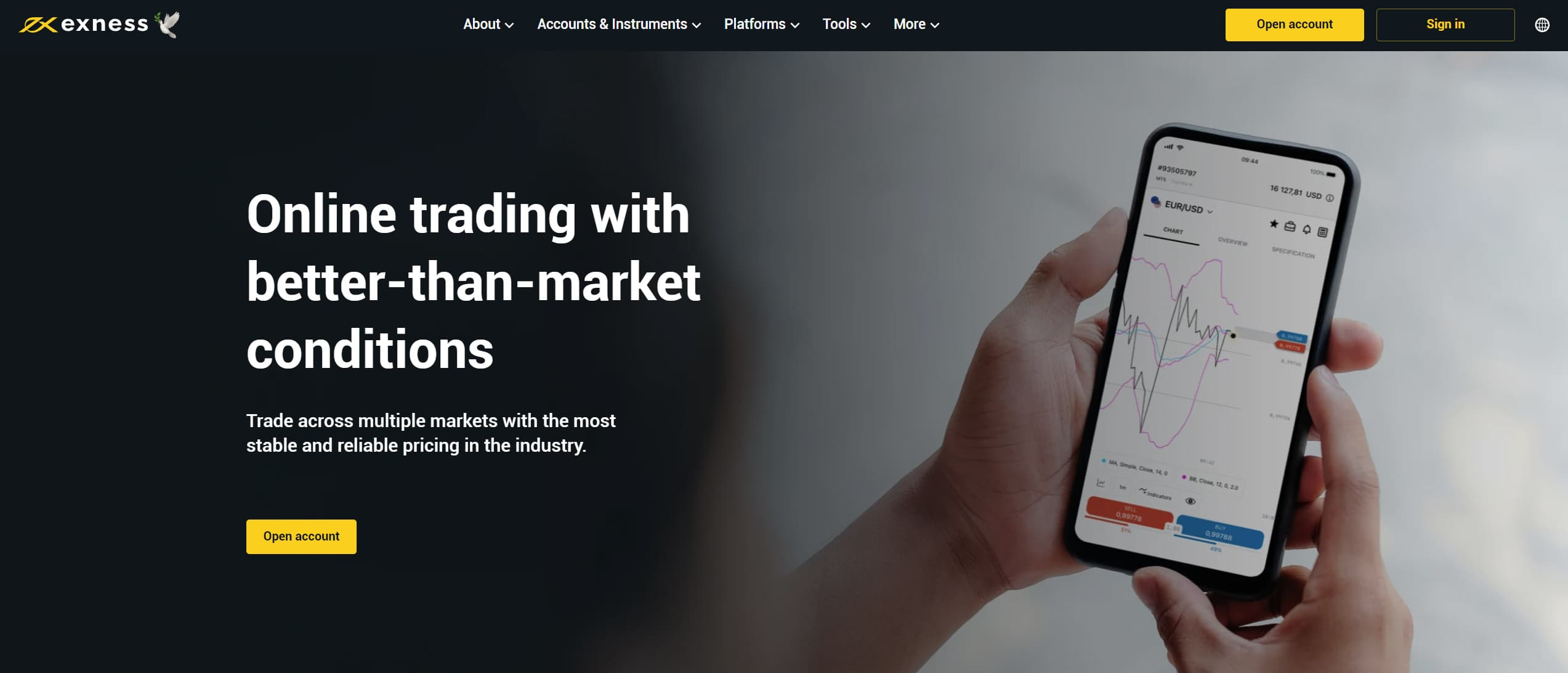
The trading instruments available to trade on Exness total over 250 assets, allowing people to diversify their portfolio as they see fit. In particular, traders gain access to CFDs on forex, metals, cryptoсurrencies, energies, stocks, and indices. To access these market products, traders can use a variety of trading platforms, including MetaTrader 4, MetaTrader 5, Exness Terminal, and the Exness Trader app.
This broker features strong regulatory oversight, operating under the supervision of several financial organisations. These include the FCA in the UK, the CySEC in Cyprus, the FSCA in South Africa, and the CMA in Kenya, among others.
Remember that Forex and CFDs available at Exness are leveraged products.
Their trading can result in the loss of your entire capital.
XM
Another noteworthy broker that offers micro-lot trading is XM. This global broker supports trading in different sizes by supporting micro, mini, and standard lots. This feature is available on the Standard and the XM Ultra low accounts. However, it is not available on the Shares account. The minimum deposit to start trading with this broker is a low $5, making the entry point competitively low.
The spreads offered by this broker vary based on the type of trading account. The Standard account features spreads starting from 1.6 pips on major currency pairs, with no commission fees. For traders looking for tighter spreads, the XM Ultra Low account offers spreads from as low as 0.8 pips, also without commission. Meanwhile, the Shares account applies a commission that depends on the specific share being traded and the trade size.
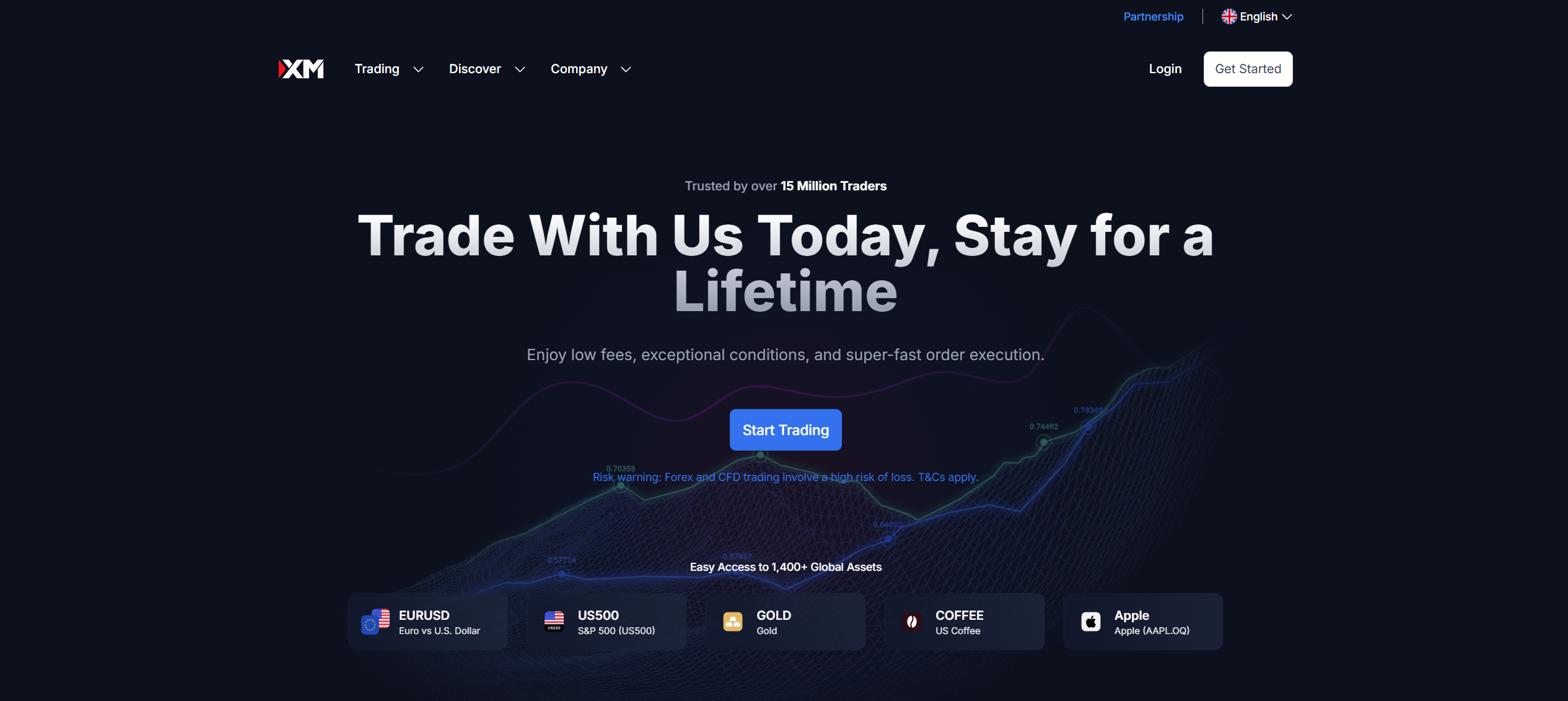
There are a variety of market products available to trade through XM, including over 1,000 different products. This includes CFDs on forex, equity indices, shares, cryptocurrencies, commodities, metals, stocks, and energies. Traders can pick from a variety of advanced reading platforms, including MetaTrader 4, MetaTrader 5, and XM’s trading app.
XM adheres to stringent global standards through its robust regulatory framework. These include the ASIC, the CySEC, the DFSA, and the FSC in Belize.
75.18% of retail investor accounts lose money when trading CFDs with this provider.
Tickmill
Tickmill is another broker that offers micro accounts. While the name is not exclusively micro accounts, this broker supports a minimum trade size of a micro lot on all its accounts. This small minimum trade size is available across all major account types, including the Classic and the two Raw accounts.
Speaking of accounts, the fees involved will depend on the specific type a trader chooses. The Classic account offers spreads starting from 1.6 pips on major currency pairs with zero commission. For those seeking tighter spreads, Tickmill provides two raw spread account options, both featuring raw spreads as low as 0.0 pips. The Raw account charges a commission of $3 per side per lot, while the Tickmill Trader Raw account applies a $3.5 commission per side per lot.
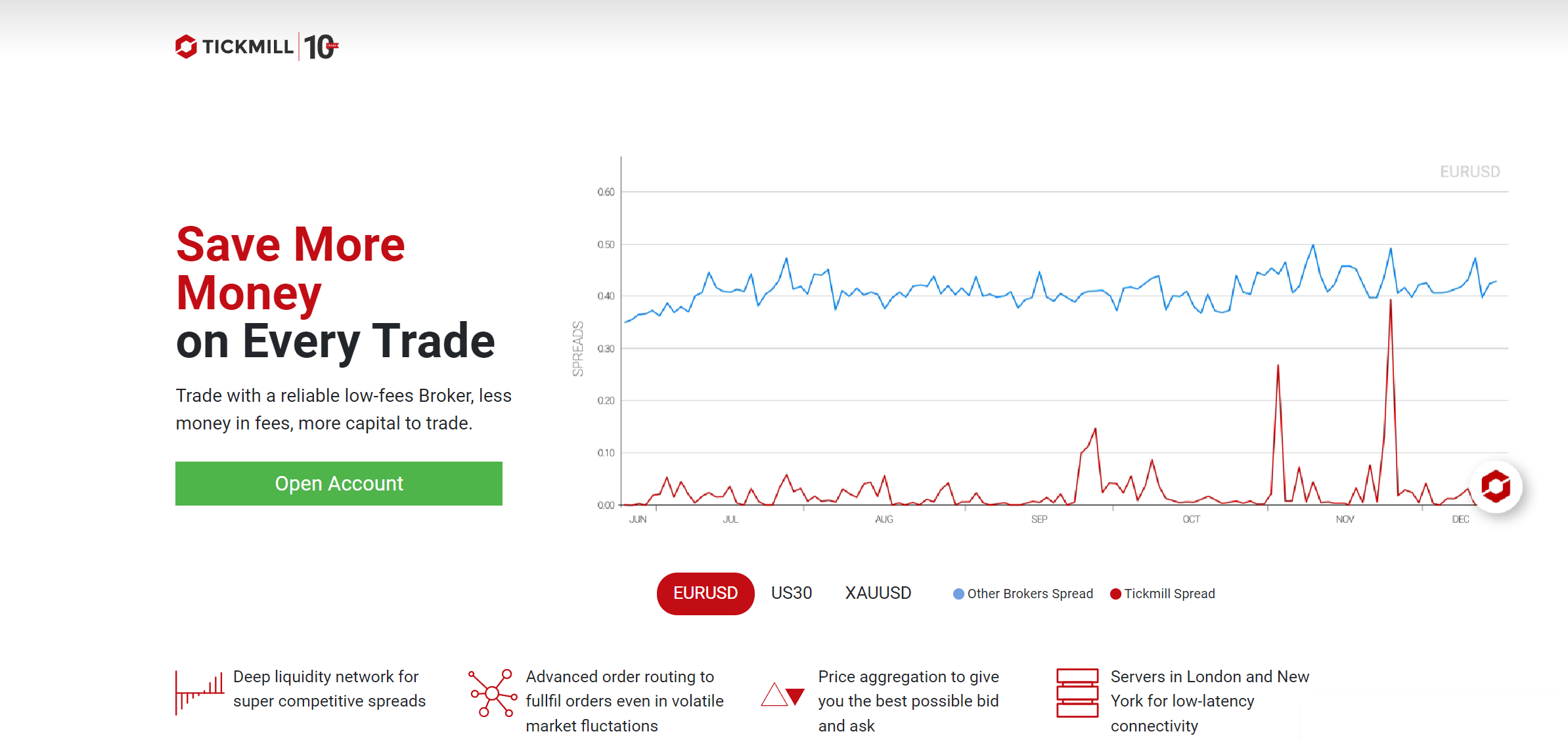
Tickmill offers a diverse selection of tradable assets, including CFDs on forex, stock indices, precious metals such as gold, bonds, commodities, and cryptocurrencies. These assets are accessible through popular platforms like MetaTrader 4, MetaTrader 5, and the proprietary Tickmill Trader platform.
Regarding regulation, Tickmill operates under the rigorous oversight of multiple financial regulators. These include the FCA, the CySEC, the DFSA in Dubai, and the FSCA, among others.
71-74% of retail investor accounts lose money when trading CFDs with this provider.
Forex.com
While Forex.com doesn't explicitly offer a separate micro account, it does provide trading with micro lot sizes (0.01 lot) on its available account types. This achieves the same flexibility as a dedicated micro account, allowing traders to operate with smaller contract sizes.
Forex.com provides several account types with varying fee structures. The Standard Account offers spreads starting from 0.8 pips, while the MetaTrader Account begins at 1.0 pips, both with no commission fees. For traders seeking tighter spreads, the Raw Account provides spreads from a minimal 0.0 pips. For clients outside the US, a commission of $5 per $100,000 traded is charged on the Raw Account. In contrast, US-based traders pay a commission of $7 per $100,000 traded.
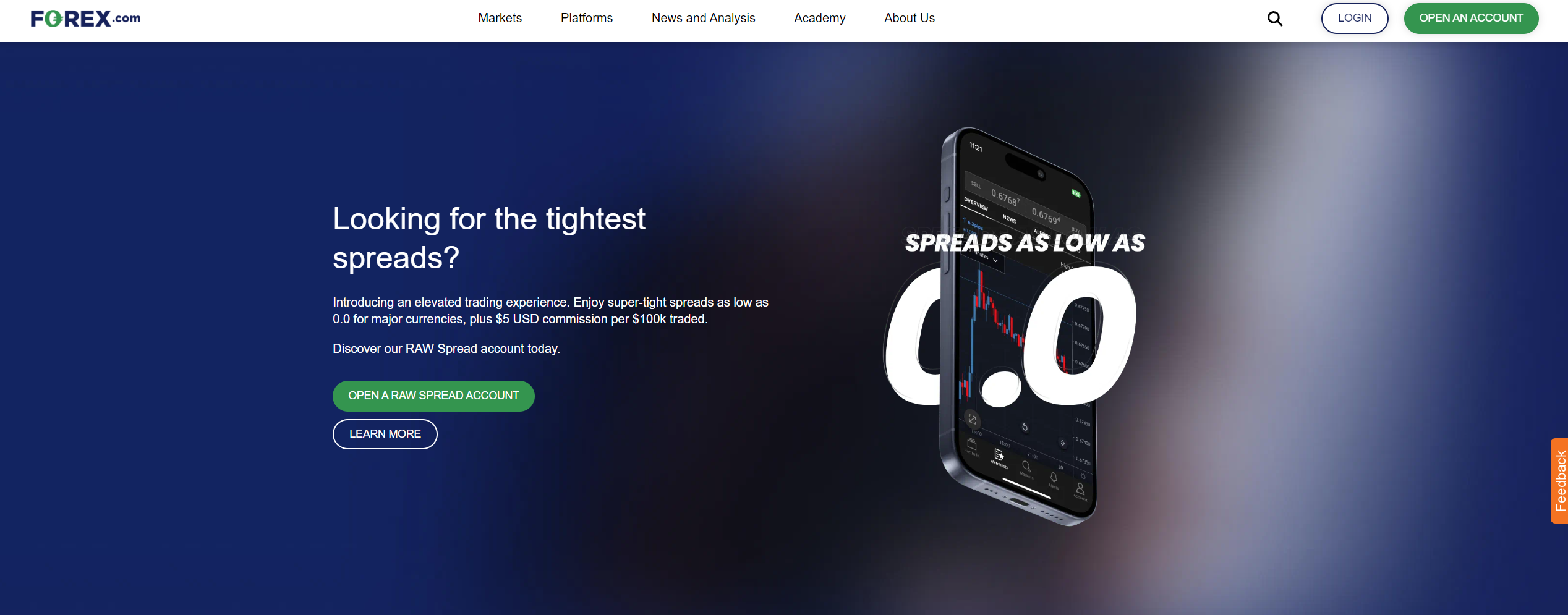
It's worth noting that the selection of trading instruments available to US clients is more limited compared to their international counterparts. For US-based traders, only forex, futures, and futures options are accessible on this broker site.
In contrast, international traders can engage with a wider array of products, including CFDs on forex, stocks, indices, cryptocurrencies, commodities, and precious metals. These instruments are available for trading on multiple platforms, such as MetaTrader 4, MetaTrader 5, TradingView, and Forex.com’s own platform.
Forex.com operates under the robust regulatory umbrella of its parent company, StoneX Group Inc. StoneX is licensed by several leading financial authorities, including the FCA, the ASIC, the CySEC, the CIRO, and both the CFTC and NFA in the United States.
76-77% of retail investor accounts lose money when trading CFDs with this provider.
Closing Remarks
Choosing between a Forex Micro Account and a Standard Account ultimately depends on your trading experience, capital, and risk tolerance. Micro accounts offer a low-risk, accessible entry point for new traders and those looking to test strategies with smaller trade sizes.
They provide flexibility and help traders learn the ropes without exposing themselves to substantial financial risk. On the other hand, Standard accounts cater to more experienced traders who are prepared to handle larger positions and can manage higher levels of risk in pursuit of greater profit potential.
Both account types are widely supported by top-tier brokers, many of which allow micro lot trading even on standard accounts. This flexibility ensures that traders can grow and adapt their strategies without needing to switch brokers. Before you pick any broker or trading account, just make sure it meets your trading needs in terms of capital, risk tolerance, and strategy.
Top-Tier Trusted Brokers
The table below contains links to 3rd party websites of our top partners from whom we receive compensation at no additional cost to you.






























